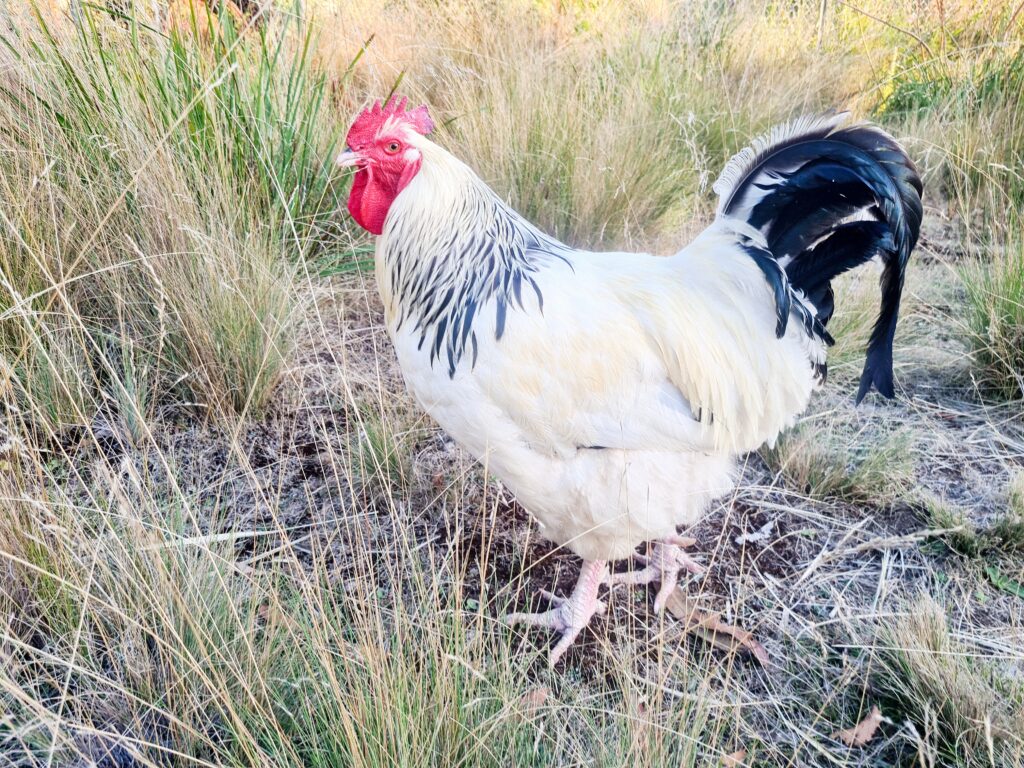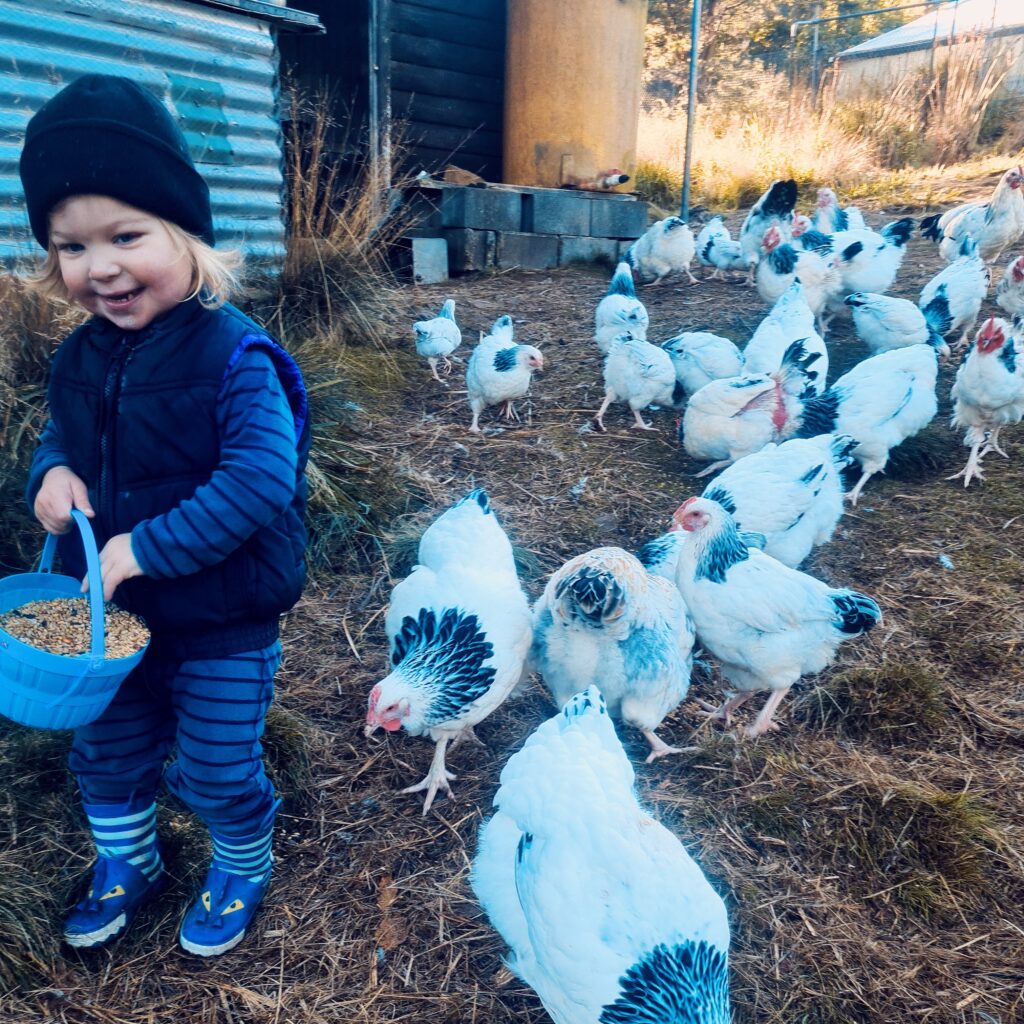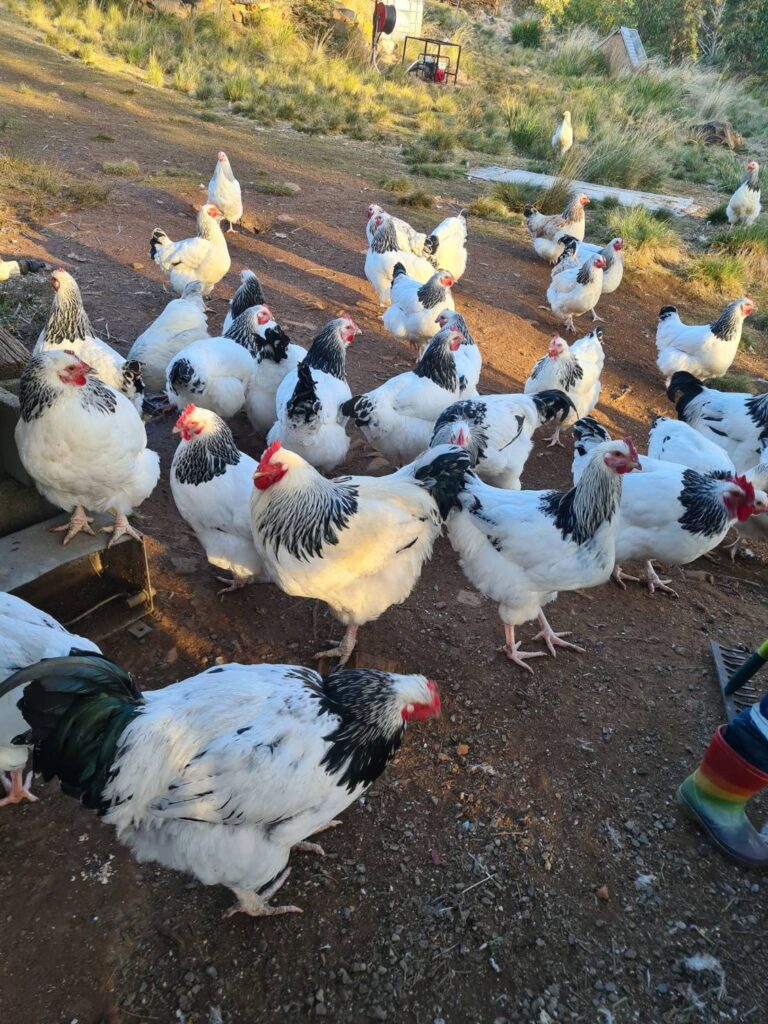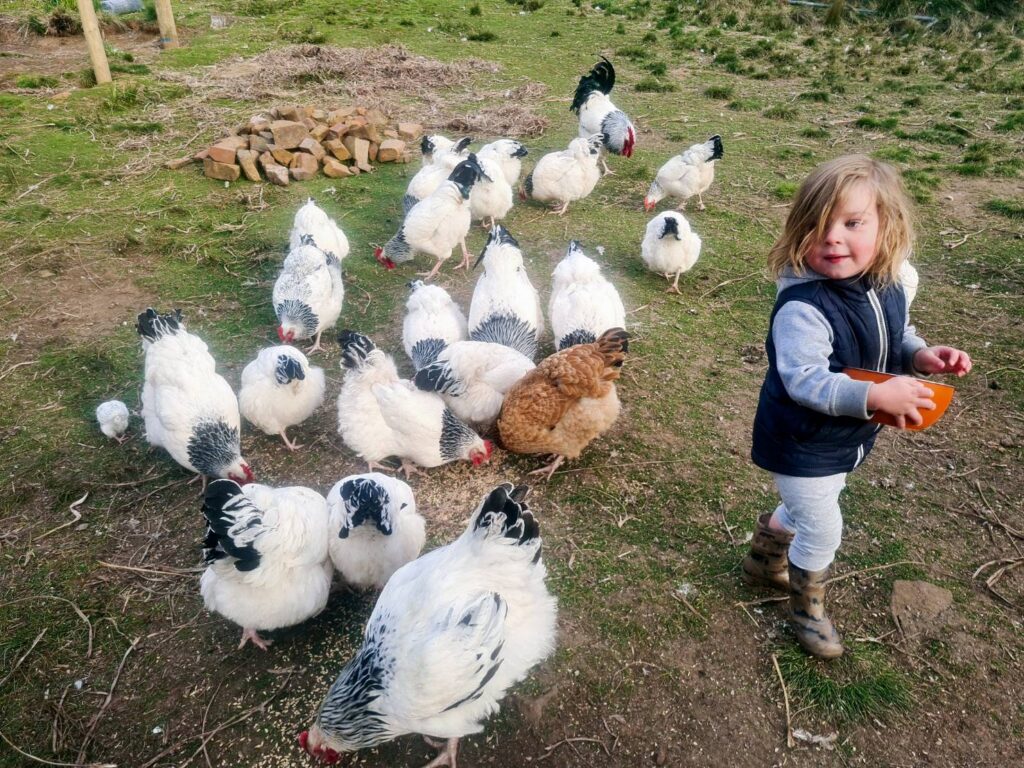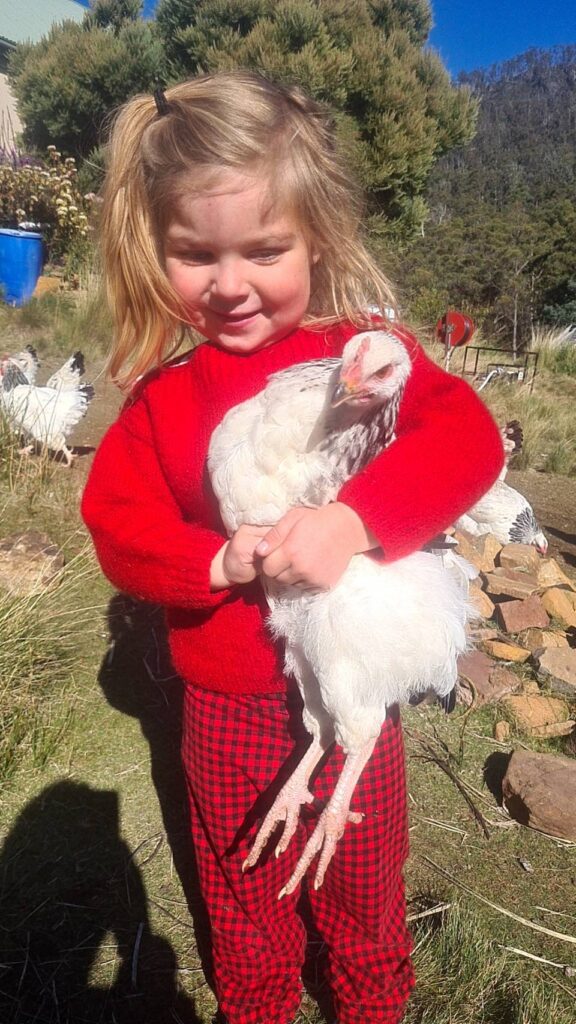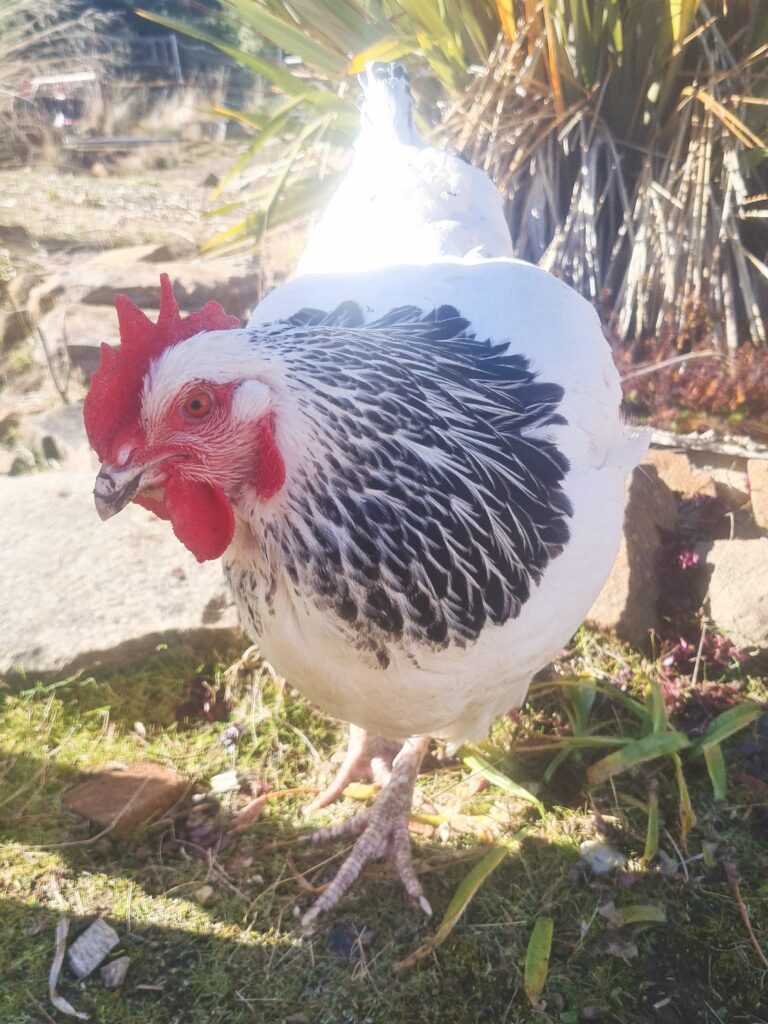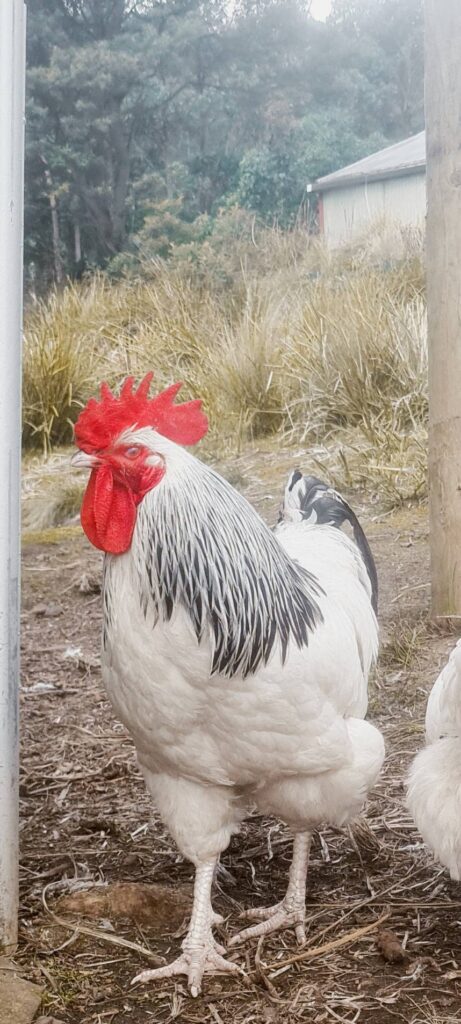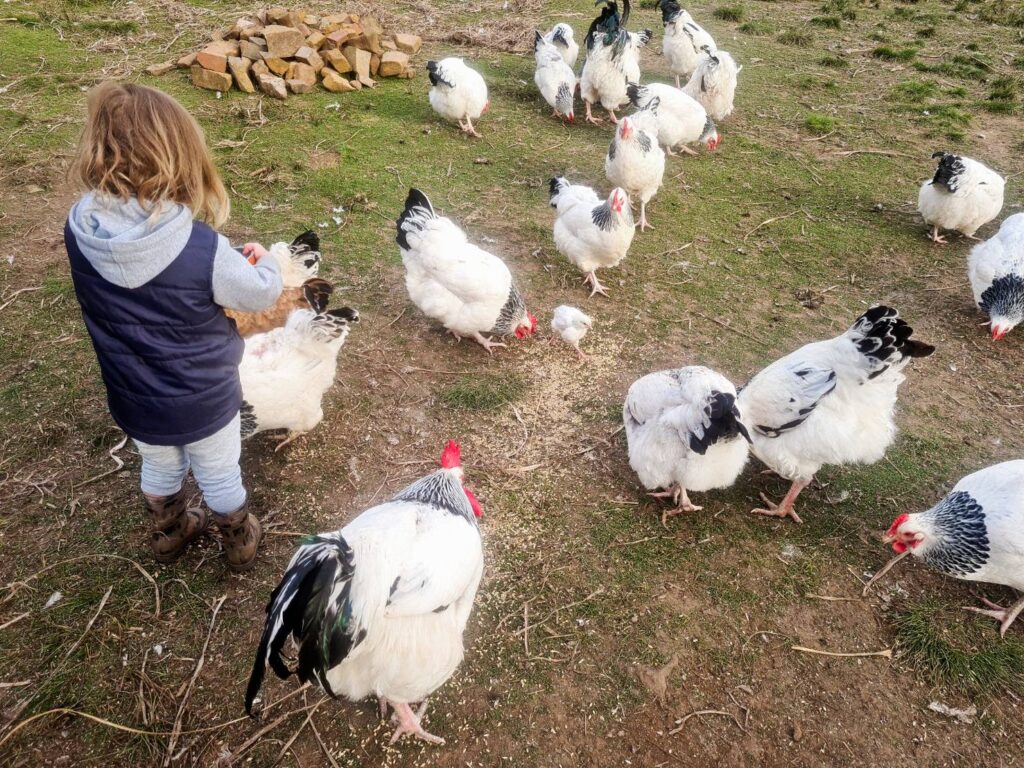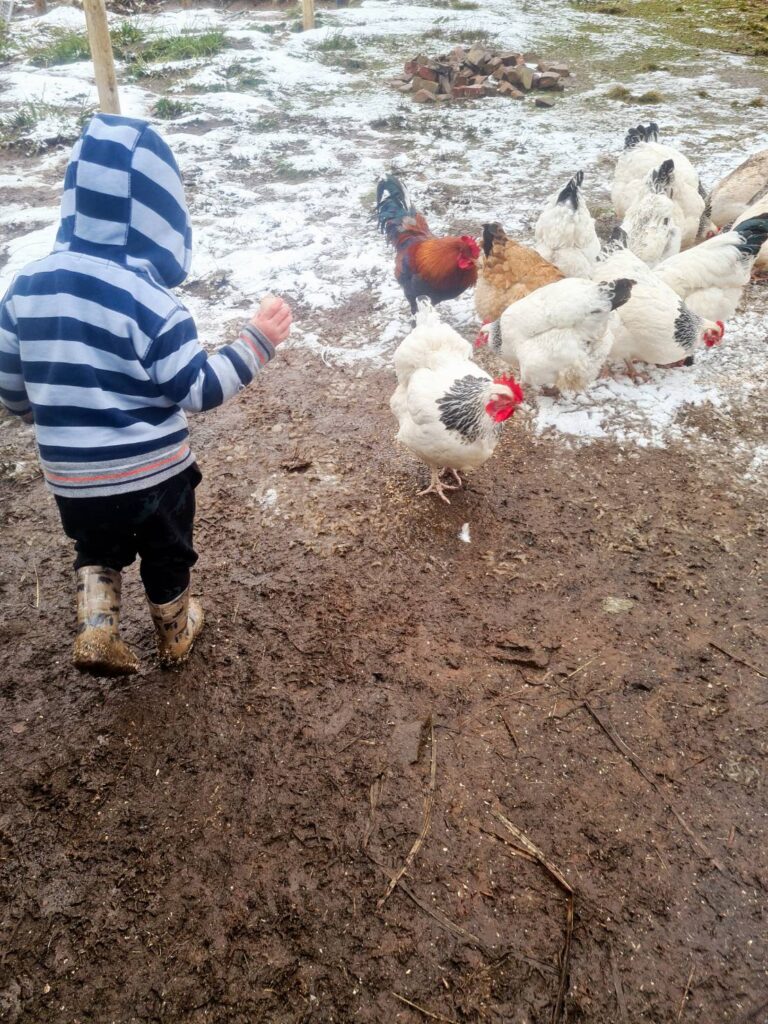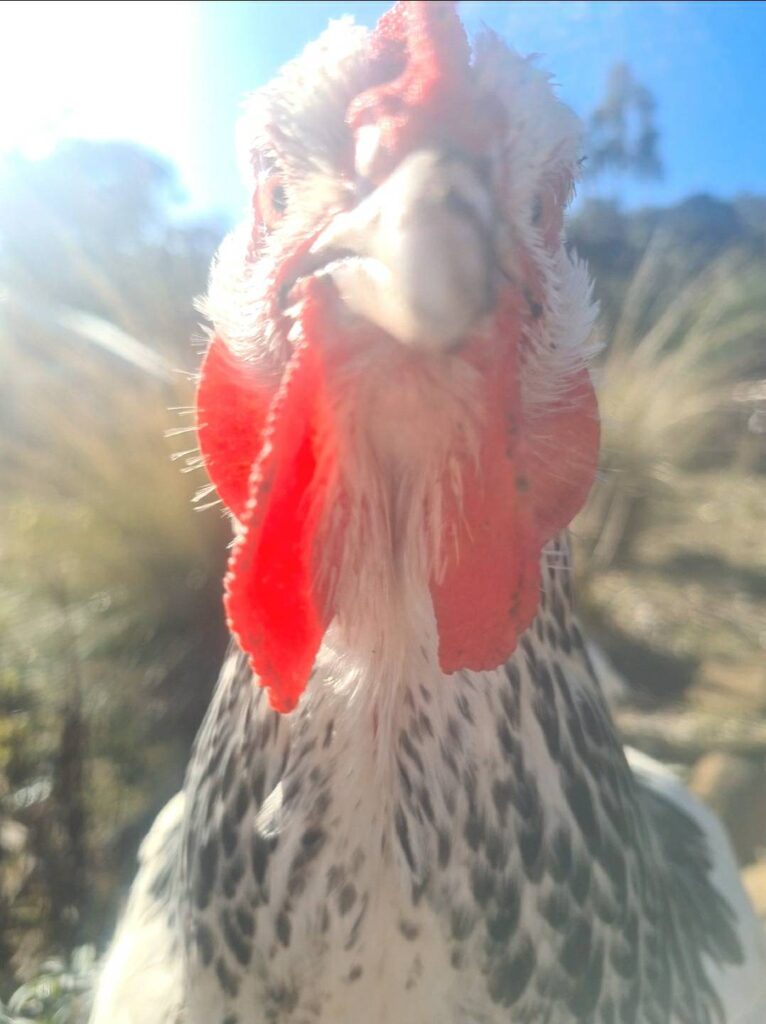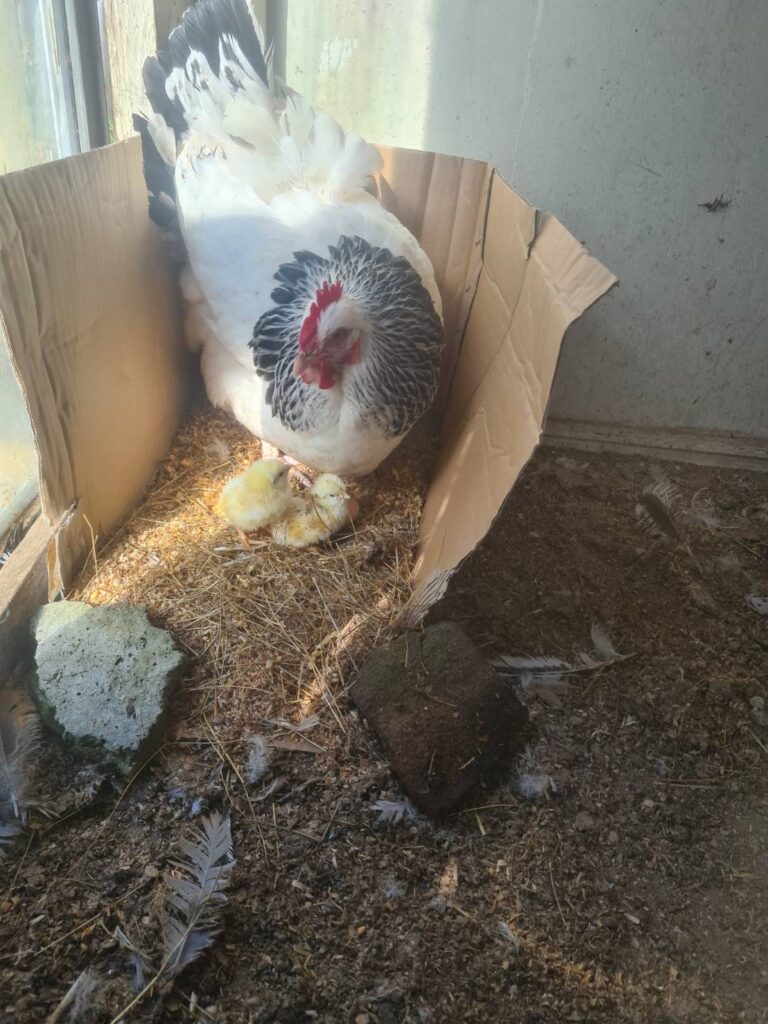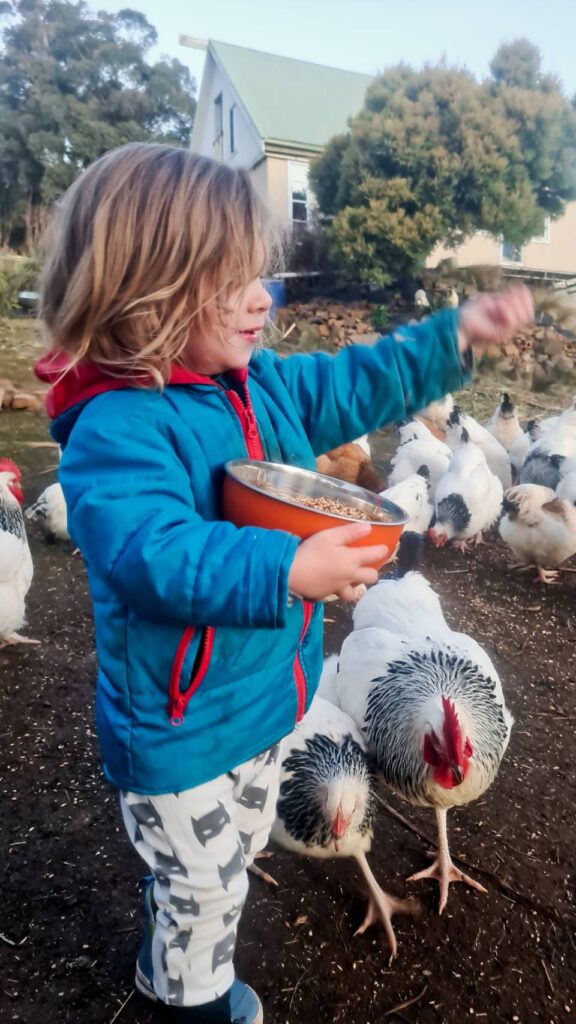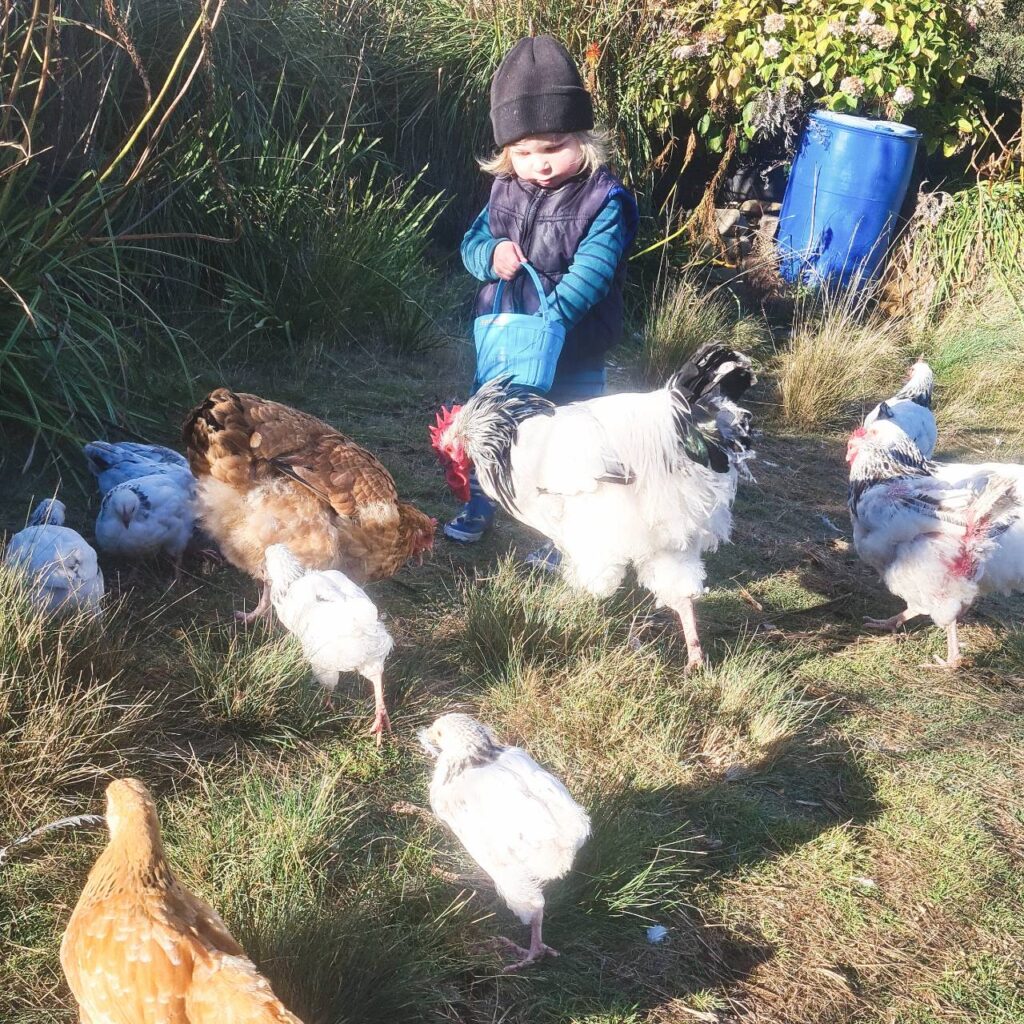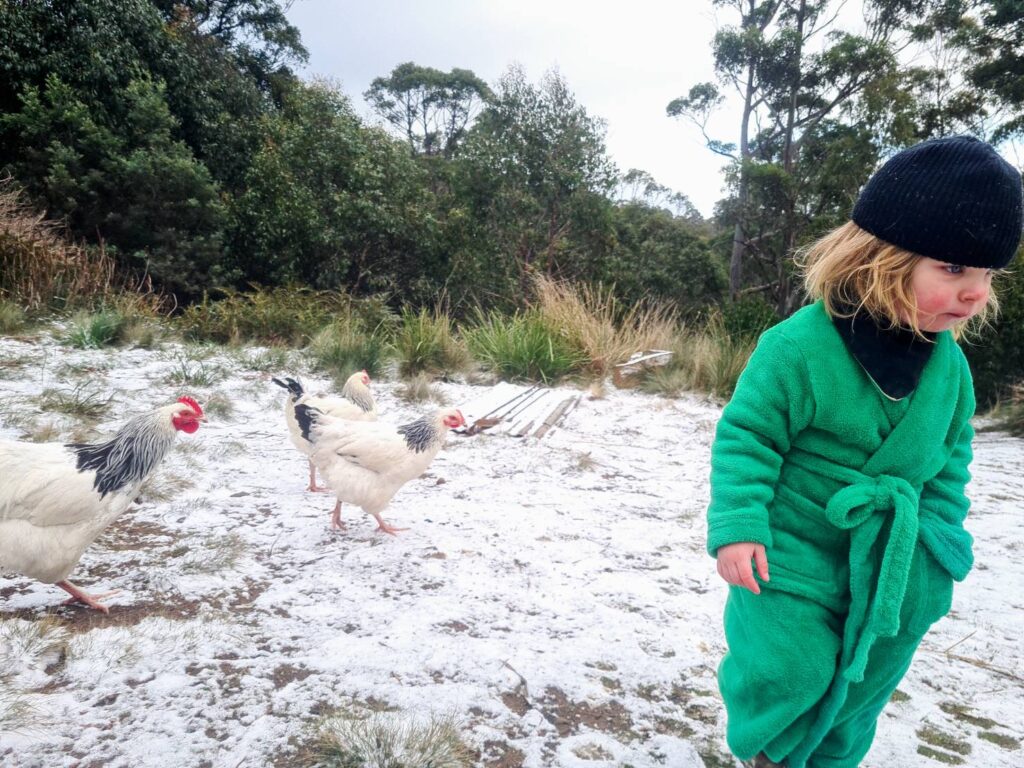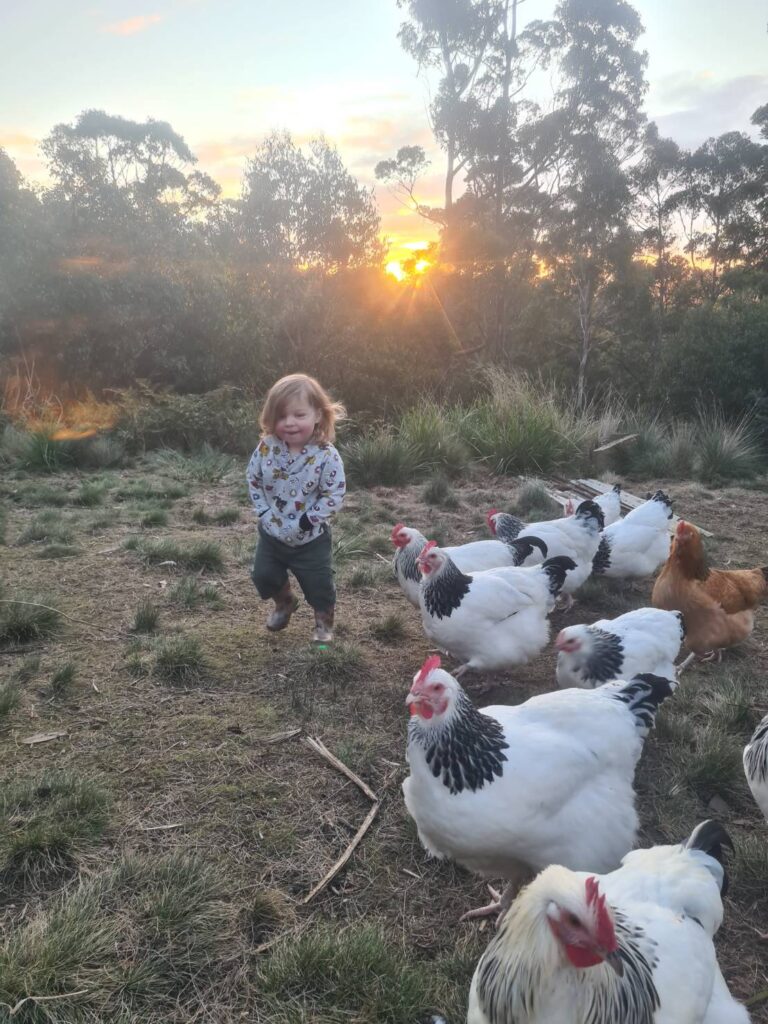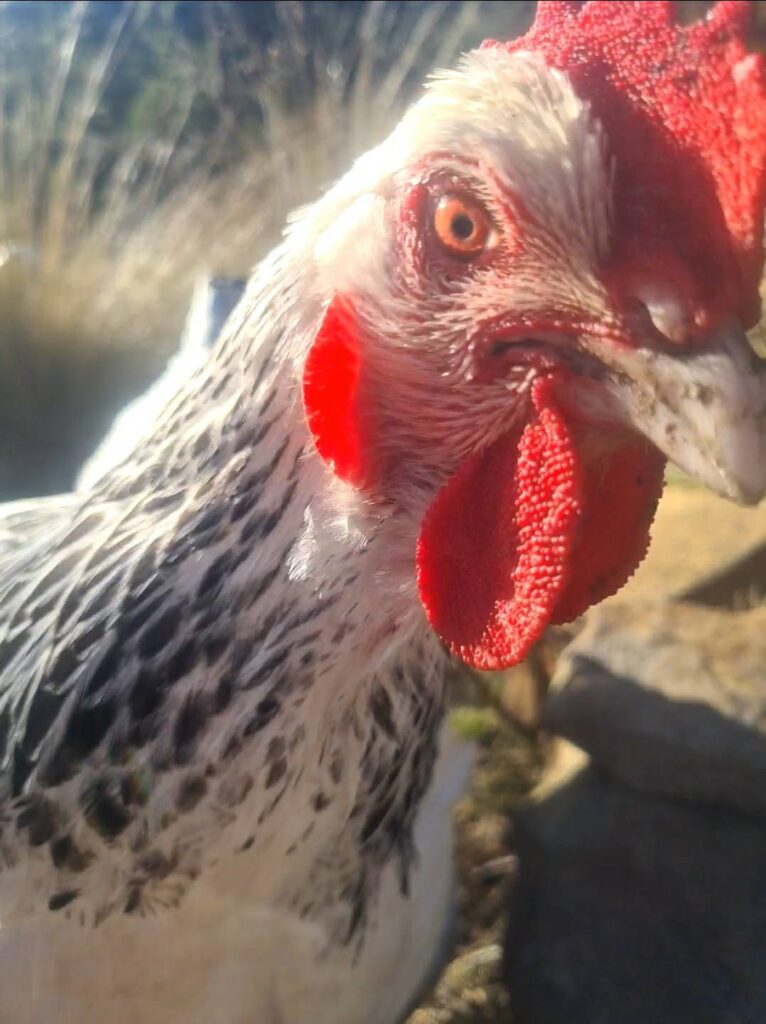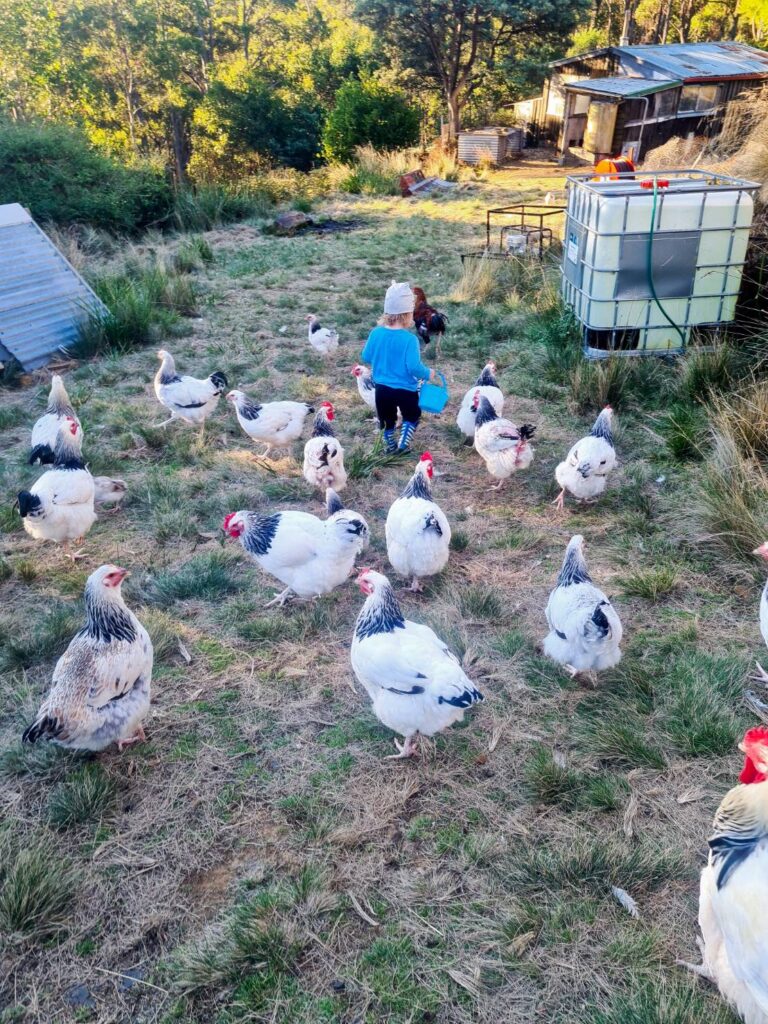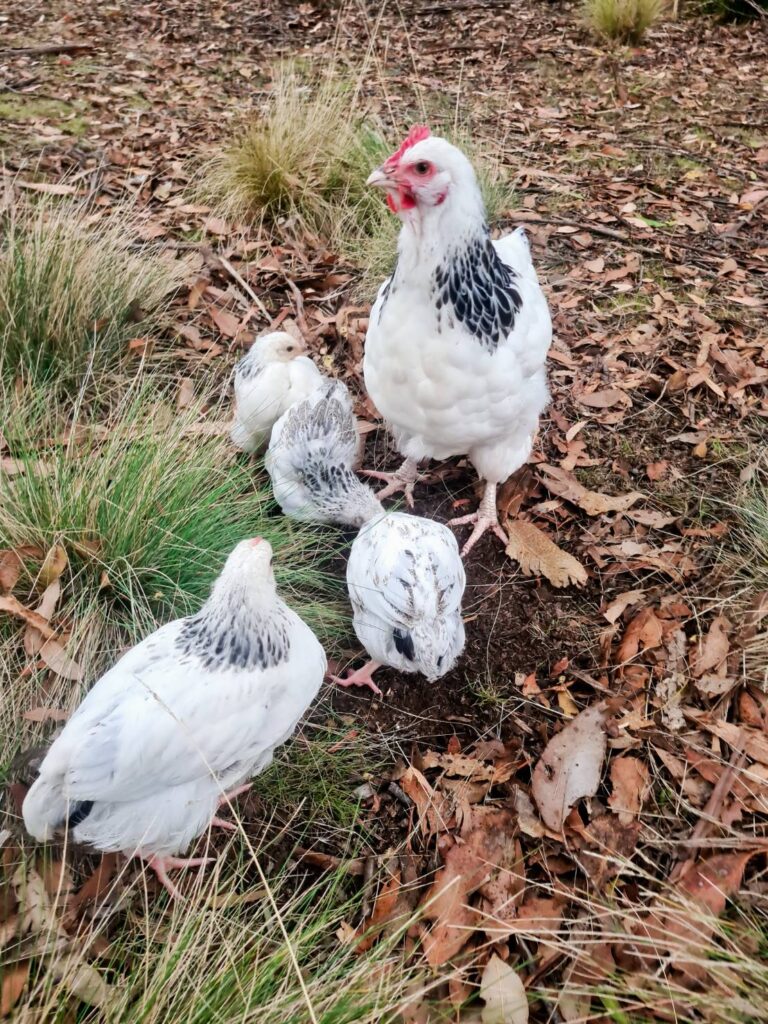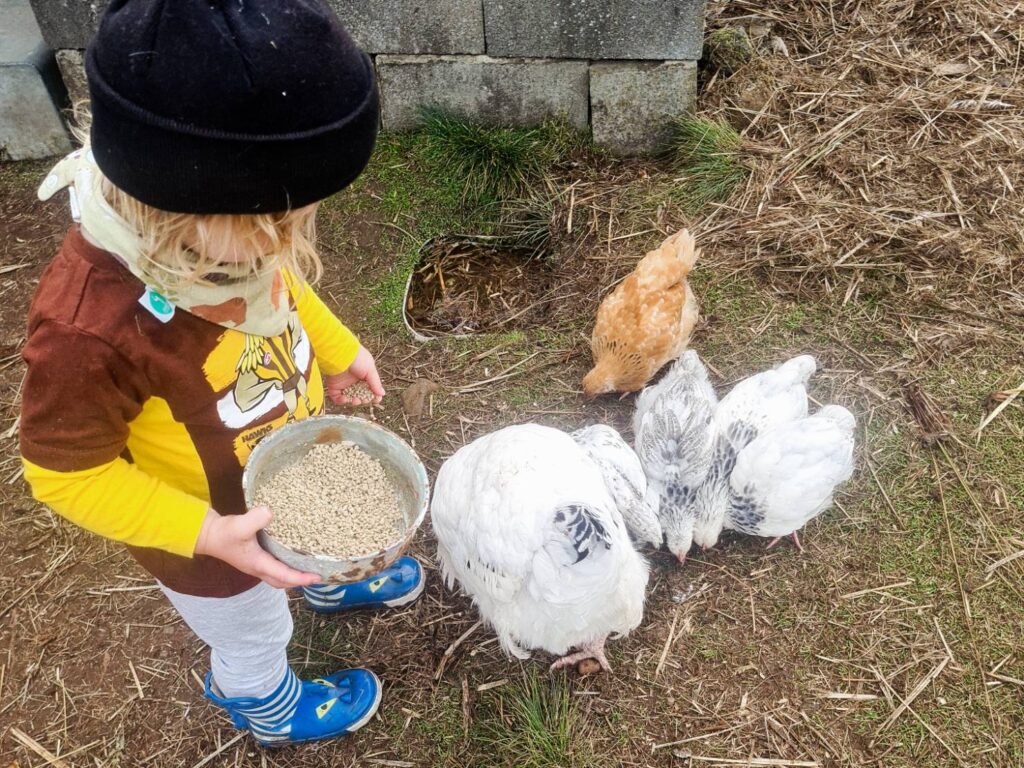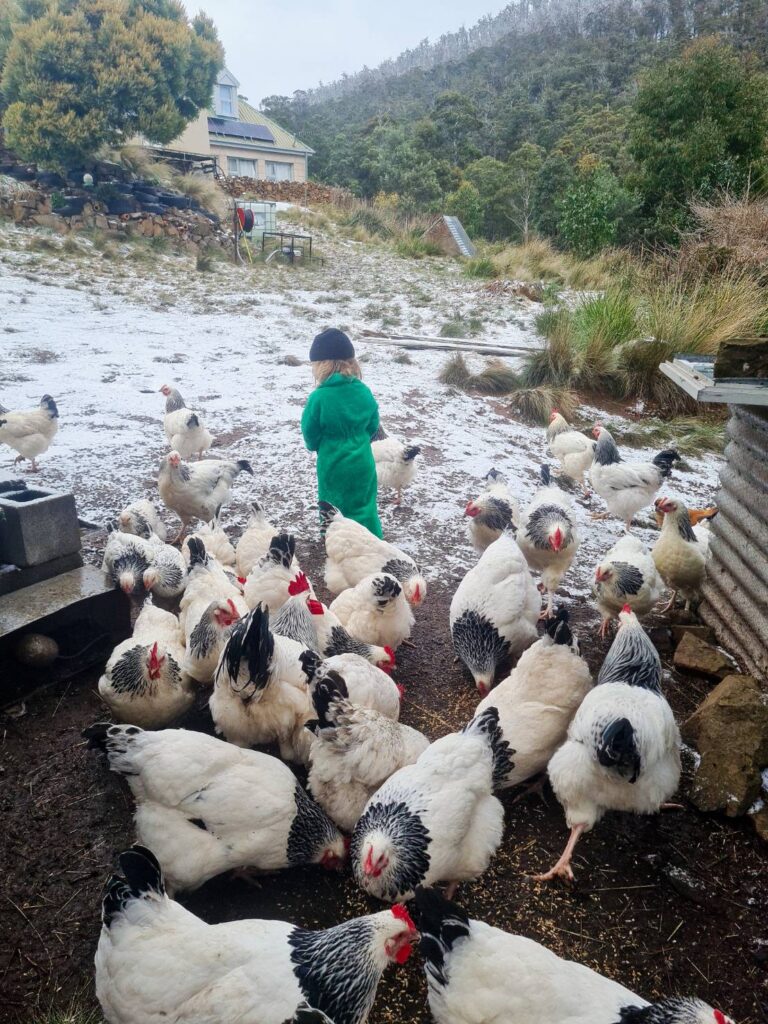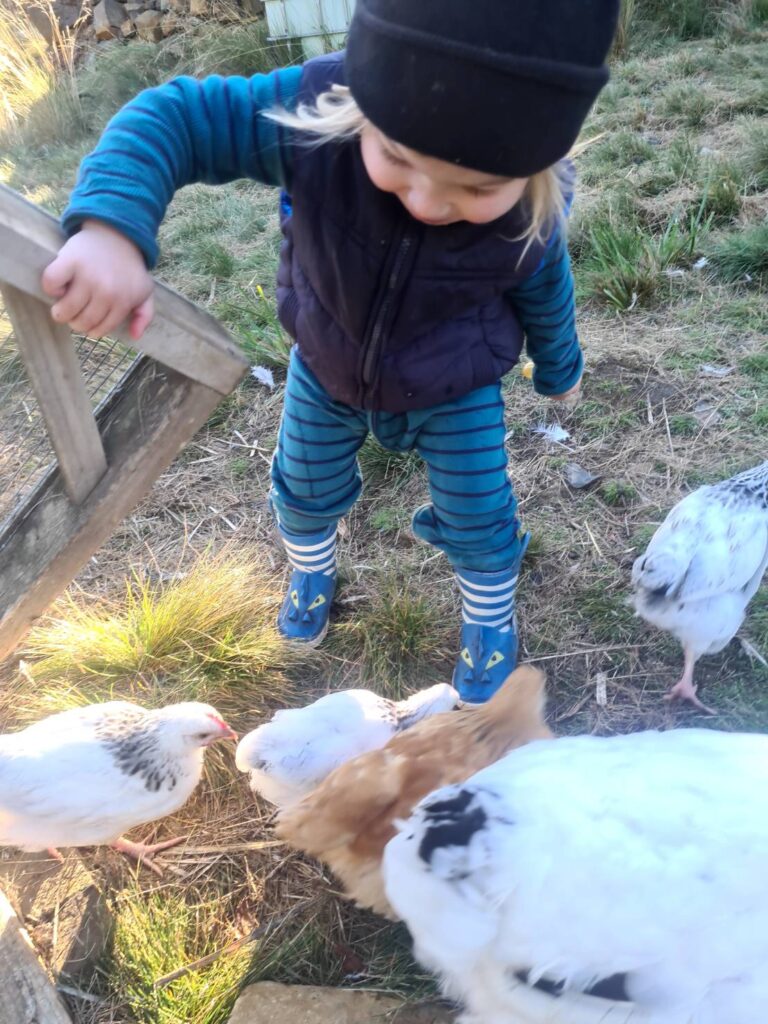Four years ago, we had never owned, or even thought about owning, a chicken. Shortly after moving to Tasmania our chicken journey began when a friendly neighbour gifted us with five Light Sussex birds – one bold and courageous rooster and his posy of four adoring hens. Most recently that same neighbour gifted us with three stunning Coronation Sussex birds – one regal rooster and two graceful hens.
Personally, we have found the Sussex breed to be an ideal dual-purpose bird for both meat and eggs with the added bonus of being excellent parents to their little ones. Strangely, even though they have over 100 acres to roam, they seem to really enjoy our company and follow us around wherever we go.
Once we adjusted to the responsibilities of raising chickens, and the joy of our new flock, now at around 50 birds, we realised our lives would never be the same, and we couldn’t be happier!
History of Sussex Chickens
Sussex chickens are thought to be one of the oldest known breeds originating in Sussex, England around the time of the Roman invasion of Britain in A.D. 43. The first poultry exhibition was held at the London Zoo in 1845 and featured birds called “Old Sussex or Kent Fowl”; a combination of red and speckled Sussex varieties. Over time they were bred with oriental breeds including Brahma, Cochin and Silver-Grey Dorking, evolving into the Light Sussex – which has been recognised as a breed standard since 1902. The following year a Sussex breed club formed and remains one of the oldest clubs in Britain.
The Coronation Sussex was bred in the 1930s to celebrate the coronation of King Edward VIII. It was thought to have disappeared by the time of the second world war (early 1940s), though a bantam variety was re-created in the 1980s. Apparently, the Coronation is now an extremely rare breed.
Today, the Sussex are still considered one of the most productive breeds of poultry.
Meat Production
In the United Kingdom the Sussex was considered one of two principal meat breeds, the finest of eating fowl, up until the introduction of the broiler (young chicken, four to six weeks old) industry or commercial hybrid strains, around about the time of World War II. At this time other breeds matured quicker, thus becoming the preferred option for meat production. Nevertheless, Sussex cockerels (males) that are harvested at around six months of age will be meaty with a firmer flesh than the younger broiler chicken of today. So, whilst Sussex varieties mature too slowly to be considered an ideal commercial chicken, they are still a recommended and preferred choice for high-quality meat production.
We process our own birds and, on average, the dressed weight of a Sussex rooster is between two and three kilograms. This provides our family of three with meat for three meals (or nine servings). For example, chicken roast and vegies, a chicken soup, and a chicken rice dish. Most people we know seem to process their chickens when they are newly matured – around five months of age, though we prefer to wait until between one to one-and-a-half years of age (though, sooner if there are negative behavioural traits or genetic defects). We understand this may make the meat a bit tougher and the leg meat a bit darker, but overall, it doesn’t make a difference to the quality and flavour.
If you’d like to learn more about how to process a chicken, click here.
If you’d like to learn more about chicken recipes we use, click here.
All about eggs
During the 1930s, competitive laying trials were introduced, under standardised conditions, to test levels of improvement in egg production as a result of breeding. Leghorns, Rhode Island Reds and Sussex became the most popular breeds, as they saw the greatest overall improvements. The most successful, however, was a cross breed of Rhode Island Reds and Light Sussex. Additional to egg production, the chicks could be sexed from one day old with cockerels being silver and pullets (females) being gold.
Sussex start laying between the ages of seven and nine months, which is later than other breeds, laying from around four to six months. Their production cycle takes an average of 26 hours, which means hens won’t lay at the same time every day. Typically, however, they tend to lay in the morning. If you have free-range hens and are having difficulty finding nests, consider keeping them in their coop until lunchtime.
Both the Light and Coronation varieties are steady layers producing an average of 250 eggs annually, although some can produce anywhere from 180 to 280 eggs. Hens may lay fewer eggs due to a variety of reasons including reduced light, stress, poor nutrition, molting, age, inadequate housing, mites or lice, or possibly aggressive roosters. Generally, Sussex stop producing eggs coming in to winter, though occasionally some may still lay. Their eggs are large, weighing around about 50 to 60 grams. However, when a hen reaches the point of lay, their first few eggs are typically much smaller. Conversely, as hens grow older their eggs tend to reduce in size.
Sussex present a variety of coloured eggs including pale pinkish, cream, tan, light brown and brown. More recently, there was an introduction of some Light Sussex layers designed to produce olive green eggs, though these are rare. Of the Sussex varieties, Light and White are best choice for layers.
If you’d like to learn more about eggs, click here.
Broodiness / Tenderness to sit
Sussex are typically comfortable in both confined and free-range spaces, though will mate and breed more successfully in larger free-range settings. Most of our birds appear to be fairly fertile with frequent levels of broodiness – some up to three times per year, typically during the warmer months.
We count our chickens every night. If one is missing, we will go on, sometimes very lengthy, searches to find them. Once we lost a hen for three days. We had lost hope, thinking she was taken by a quoll or Tasmanian devil. Fortunately, we found her, in an excellent hiding spot right next to a fence underneath a lot of bracken, sitting on a clutch of 16 eggs. Interestingly, other hens will often lay eggs on top of their broody friends, who then sit on, and incubate, the freshly laid eggs.
Once we realise a hen has gone broody, we relocate her, and her eggs, to a small and safe outdoor space where she is more likely to remain healthy while caring for her eggs. We have found having our hens outside during sitting is much more effective than inside – they need the sunlight and fresh air. After we moved this hen and her horde of eggs, she managed to successfully hatch 12 of them!
Hens are fascinating in that they rotate their eggs at least once per day for at least three reasons – to ensure the embryo does not stick to the shell membrane, to ensure the gases move around the egg and to moderate the temperature. If you want to incubate eggs in an incubator, you need to mimic nature by rotate the eggs daily.
Hens will get off their clutch perhaps once per day, for food, water and to poo. Sometimes young chickens don’t get up as often as necessary and can become quite sick. If you suspect your broody hen is unwell, it is best to take her off the nest to brake her broodiness and receive much needed nutrients.
Overall, we’ve found Sussex make for excellent maternal mothers caring for their chicks for up to six months, sometimes longer. Additionally, they are happy to foster or adopt other chicks.
If you’d like to learn more about incubating chickens, click here.
Diseases and health problems
The Sussex variety are very robust and healthy chickens. They are not susceptible to any particular diseases and typically require no special treatment to survive. You should, however, at some point expect the usual parasitic suspects (lice, mites and worms), especially in summer. These are easily prevented with regular checks. Symptoms may include pale comb, excessive pruning or feather loss, scaly legs or worms in poo. If found, they are easily treatable with diatomaceaous earth, coop mite spray, ash from your fireplace or petroleum jelly on their legs – depending on your circumstances, and cleaning out your coop. Depending on the size and make of your chock house this may require some effort. Cleaning our chook shed takes a whole day. More on this here.
The roosters should have large combs and wattles which, if in the colder climates, may endure frostbite (dead tissue, appears off-colour, purple or black). The dead tissue won’t grow back, though don’t try to remove it because it protects underlying tissue. Just leave it be. To avoid this, rub petroleum jelly on their combs and wattles during colder periods. If your chickens do happen to suffer from frostbite, gradually warm the area with a damp cloth, or place their feet in a warm shallow bath, for around 15-20 minutes.
Sometimes, chickens become sick for no apparent reason. Sometimes it is old age, or sometimes it could be from new and already affected birds introduced into your flock. If your chicken is behaving differently, keep them in a safe and contained isolated space, keep warm and offer food and water and hope for the best. Sometimes it could be helpful to place a couple drops of ivermectin in their water, though best to speak to a vet or local animal feed producer.
Behaviour
Light and Coronation]s typically have a sweet and gentle disposition. They are friendly, companionable and often don’t mind being held. They are good foragers, adaptable and capable of looking after themselves and each other. The roosters in particular are very protective of their flock, especially chicks. They are curious and alert but also calm and relaxed. Not overly noisy, usually only after laying eggs, calling to their chicks or if danger is about.
Sussex are a confident breed that integrates well with other animals including other chickens. There inevitably will be some standoffs when introducing new males, though, once the pecking order has been established this behaviour settles. Sometimes, however, you may get an unusually aggressive rooster, at which time he should be rehomed or processed.
In our opinion, these varieties are an excellent well-rounded family-friendly breed. Chickens are extremely flock orientated so start with at least three chickens. For a larger family, five or six hens would be suitable. The average lifespan of this breed is around eight or more years.
Appearance
Today there are eight accepted colour varieties of Sussex including Brown, Buff, Light, Red, Speckled, Silver, White and Coronation. There is also a bantam version being approximately one third of the standard size. Bantams have genes in their DNA that naturally limit the size of their body.
Below are details of both the Light and Coronation, which we house on our homestead.
At birth Light Sussex chicks are born just like most others – a typical cute little ball of yellow fluffiness, but with a silver tint. At around about two weeks, the characteristic black neck, wing tip and tail feathers begin to emerge. Two to three weeks later the fluffy down begins to malt away making room for growing in new feathers with their unique black markings. At around two months the neck feathers are well developed and the tail feathers begin to appear. Feathers around the neck are called hackle feathers, and each are laced with white around the edge.
As adults, Light Sussex should carry their robust and well-proportioned bodies gracefully. Their body is broad and long with wide shoulders and a flat back. Their breasts are square in shape with a long and deep breast bone. They have a medium sized skull and smooth face. They should sport a medium sized, single, erect comb with five well-defined and closely fitting points. Their medium sized earlobes are red, while the eyes are orange, full and bright. The beak will be short, strong and well curved with varied colours from horn to pinkish or white. They have stunning pure snow-white plumage. The tail should be at a 45-degree angle with feathers displaying a mesmerizing blue sheen. Their skin and legs are white with the legs being featherless, short and wide apart. They should have four straight and well spread toes. Overall, a very striking and attractive bird.
The Coronation’s markings develop much like the Light Sussex though will appear in a soft pigeon blue/grey colour, described as ‘lavender’ by poultry breeders. This change in colour is caused by a gene that dilutes the black colour.
Serious defects include rose comb; feathers on legs; a tail that twists to one side (wry); more or less than four toes; yellow skin, legs or feet; or any deformity.
Light and Coronation Sussex (Not Bantam)
| Cock (male) | 4.1kg | 9lbs |
| Hen (female) | 3.2kg | 7lbs |
| Cockerel (young male) | 3.4kg | 7.5lbs |
| Pullet (young female) | 2.7kg | 6bls |
Bantam Variety Sussex
| Cock (male) | 1kg | 2.3lbs |
| Hen (female) | 0.9kg | 2lbs |
| Cockerel (young male) | 0.9kg | 2lbs |
| Pullet (young female) | 0.8kg | 1.8lbs |
Overall, there is a lot of things to consider when deciding which breed of chicken is right for you, your family and your needs. We can only comment on the chickens we have experience with, and based on ours, we have no desire or intention to switch to a different breed. We are really happy with our flock and we think they are really enjoying their beautiful place in the bush.
If you have any questions or would like more information, please reach out to use anytime. We are more than happy to have a chat, and also happy to do some more research for you if you have questions that we can’t answer.

